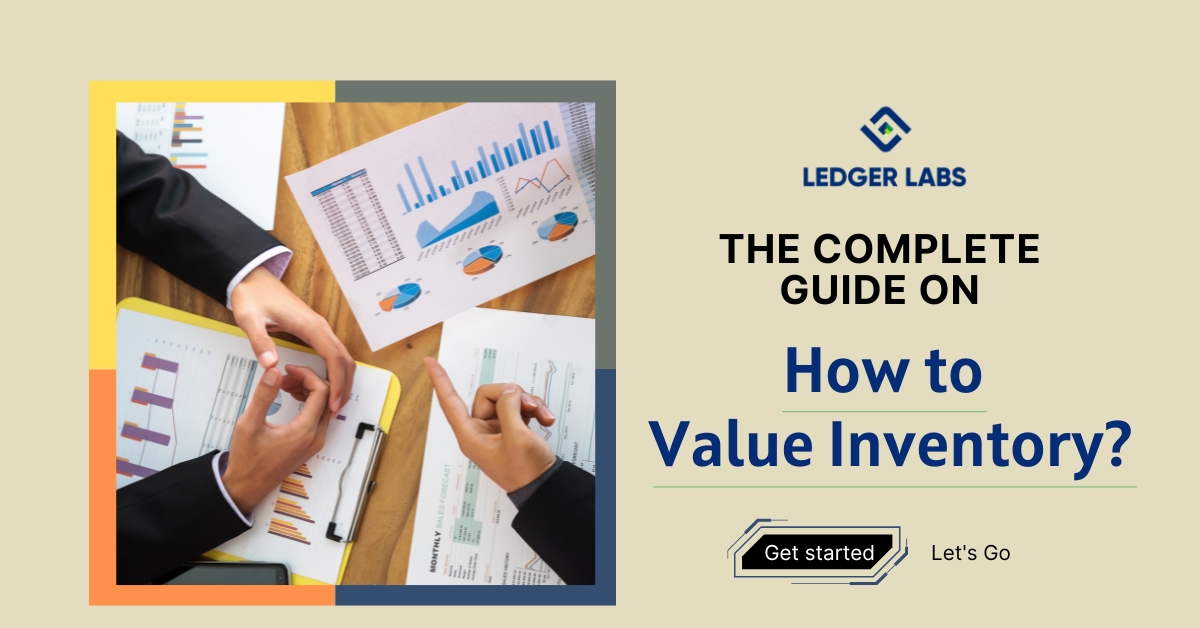Check out the entire thread below to understand how to value inventory with extensive detail on the matter with a deeper insight into FIFO vs LIFO, average cost method accounting, and much more for your benefit.
Inventory is one of the most important and sensitive things for any business. Whether you are a small-scale or big-scale business, it’s quite important to always keep in check the entire existing, past, and future inventory and inventory requirements for better control over the business. When the inventory is appropriate and precise, you can easily meet the demands of the customers as well as gain more profit by minimizing the losses due to damaged or perished inventory.
Whether it is the stock of inventory or the valuation, both are equally crucial for a business. We have often found businesses and entrepreneurs to be wondering how to value inventory. This question arises because the cost of inventory can very easily differ from other businesses and competitors. Additionally, the impact of the valuation of the inventory is not listed to the businesses only but is also important if considered from the investors’ point of view. This is because the investor takes the help of inventory valuation techniques to know the actual health or position of the business.
So, to help you and your business to ascertain how to value inventory, once and for all, we have summed up this write-up for you. Here, you will get all the details related to different techniques to evaluate the inventory like FIFO, LIFO, and average cost method accounting. We will explain how to use these methods and execute inventory valuation methods for tax purposes. So, before going through the techniques, let’s understand more about inventory valuation and its uses.
What is Inventory Valuation?
Just like the name, inventory valuation is a technique or process that helps an organization or eCommerce website to ascertain the total value of the inventory present with the business. Once you ascertain the value of the inventory, the number you obtain is the total size of the stock, in monetary denominations, left with the business at the end of a certain period for sale. This is the value of total unsold stock in the business at a specific date.
Why Is It Important to Value Inventory?
Before you have a look at the techniques for how to value inventory, you should know the importance of the concept. The below-provided points will help you understand why is inventory valuation important for a business of different scales:
Precise Count and Value of Inventory
When you figure out the total value of the stock using any inventory valuation methods for tax purposes, you can easily know what’s the accurate count of stock and products available for sale. Additionally, you can also figure out the value of the goods as well. You can step in the next year with an accurate plan of action to produce or procure more inventory and then sell the same as required.
Support the Future Reporting Requirements
The end number ascertained using any technique for how to value inventory can be used by the business as accurate data required to create future reports and statements. If you somehow fail to value the inventory accurately, you may face problems in the future.
Affects the Cost of Goods Sold
If you ascertain the wrong value of your inventory, you may face problems in finding out the actual profit when compared to the total Cost of Goods Sold (COGS). Hence, inventory valuation techniques have a direct impact on the profit of the organization.
Beneficial in Tax Calculation and Payment
If you use a well-suited and reliable method to find out how to value inventory, then you can easily show the same to tax officials and get tax benefits.
Influence on Investors
As stated earlier, investors in any type of industry, rely on the methods of inventory evaluation to ascertain the health of the business. The investor will find out whether the business is using a profitable method or not. Hence, inventory value also affects the decision of the investor to finance your organization.
Now let’s know about various inventory valuation methods for tax purposes in detail for further clarity.
Accuracy, Reliability, Compliance

How to Value Inventory? LIFO, FIFO, or Average Cost
With the help of the next section of this write-up, you will understand how to value inventory using different techniques.
First In, First Out (FIFO)
The first method to value the inventory for any business is to use the First In, First Out (FIFO) method. This method ascertains the value of inventory on the basis of the oldest inventory brought during the cycle.
For example, the price of product A is $5 and that of product B is $10. You bought 1,000 units of A and 2,000 units of B but sold 1,500 units in total.
Originally the COGS is $25,000 (5*1000 + 10*2000) but according to FIFO, the COGS for 1,500 units would be 1000*5+500*10= $10,000. Hence, the rest, which is $15,000 ($25,000-$10,000) is the total valued inventory for your business.
Last In, Last Out (LIFO)
The next method for how to value inventory is Last In, Last Out (LIFO). This method is the exact opposite of the FIFO method. This method ascertains the value of inventory on the basis of the newest inventory brought during the cycle.
For example, the price of product A is $5 and that of product B is $10. You purchased 2,000 units of A and 1,000 units of B but sold 1,500 units in total.
Originally the COGS is $20,000 (5*2000 + 10*000) but according to LIFO, the COGS for 1,500 units would be 1000*10+500*5= $12,500. The remaining amount of $12,500 ($25,000-$12,500) is the value of the total valued inventory for your business.
Average Cost Method Accounting
At last comes the average cost method accounting. Under this method, the average cost of the inventory is ascertained. For example, let’s assume that the total inventory left with your business at the end of the cycle is
50 units @ $10 each,
100 units @ $15 each, and
150 units @ $20 each.
So according to the Weighted Average Method, the answer to how to value inventory would be:
Total cost/total units of goods= [(50*10)+(100*15)+(150*20)] / 300
= [500+1500+3000] / 300
= [5000] / 300 = $16.66 per unit
So, these were the top methods practiced to ascertain how to value inventory. For further insight into the topic, let’s understand the factors that can help you determine which one of the methods you should use to value the inventory in your business.
Which One of the Methods Should be Used By a Business to Value the Inventory?
With the help of the above section, it must be clear the difference between FIFO and LIFO, how average cost method accounting is different from others, etc. But you may think about which one of these methods you should use in the business to find out the value of inventory. For this, the below sections are available to help you:
Market Value and Cost
Sometimes, while calculating the value of inventory, you may consider the actual cost of the product or its market value. This depends upon the nature of the products you are dealing with as well as other factors like market demand, trends, etc. If the actual cost of the inventory is unaffected by the end of the year, you can use the same cost for the valuation of inventory. However, if the price has reduced or increased, make changes in the valuation process accordingly to stay ahead of the competition.
Similarly, if the market condition shows that it’s better to reduce the value of the inventory, then you should do the same. Some inventory evaluation experts, just like those at the Ledger Labs, can help you in ascertaining how to value inventory.
Tax Purposes
Another factor that can help you decide which method to choose, FIFO vs LIFO or average cost method accounting is the tax. As you must have seen in different methods of inventory valuation, the values of inventory are always different. It can be a coincidence that you get the same value at times, but majorly, the value differs. The LIFO method values the inventory at the lowest and hence, can be beneficial for your business. Additionally, you should try to follow the same method or technique to evaluate the inventory. Don’t switch among the methods just because one method is evaluating the inventory lesser than the other. This is not a healthy habit, tax-wise.
National and International Use
How to value inventory for businesses operating in different geographic locations? If your business is operating nationally only, then you may use any of these methods to evaluate the inventory. But if your business is operating internationally, then LIFO is not recommended at all according to the International Financial Reporting Standards. Hence, you should also keep in mind your area of operation before evaluating the inventory.
Requirements of the Management Practices
Lastly, you should also keep in mind your goals and the requirements of the management before you get to how to value inventory. You should ask the management of the organization to specify the requirements from the inventory value so that you can deliver a number that suits the ballpark set by the management for future goals.
Are You Still Confused About How to Value Inventory?: The Impeccable Solution
At times, even when the businessmen and the management know everything about the valuation of the inventory, they may still need help in asserting the value. This is because the concept of inventory valuation is very sensitive and complex. So, what’s the best move for you in such cases is to seek the assistance of controller services from a renowned source like Ledger Labs. At the Ledger Labs, you will find required personnel with amazing experience in different industries who can easily help you decide how to value inventory as well as ascertain the amount for you as well.







